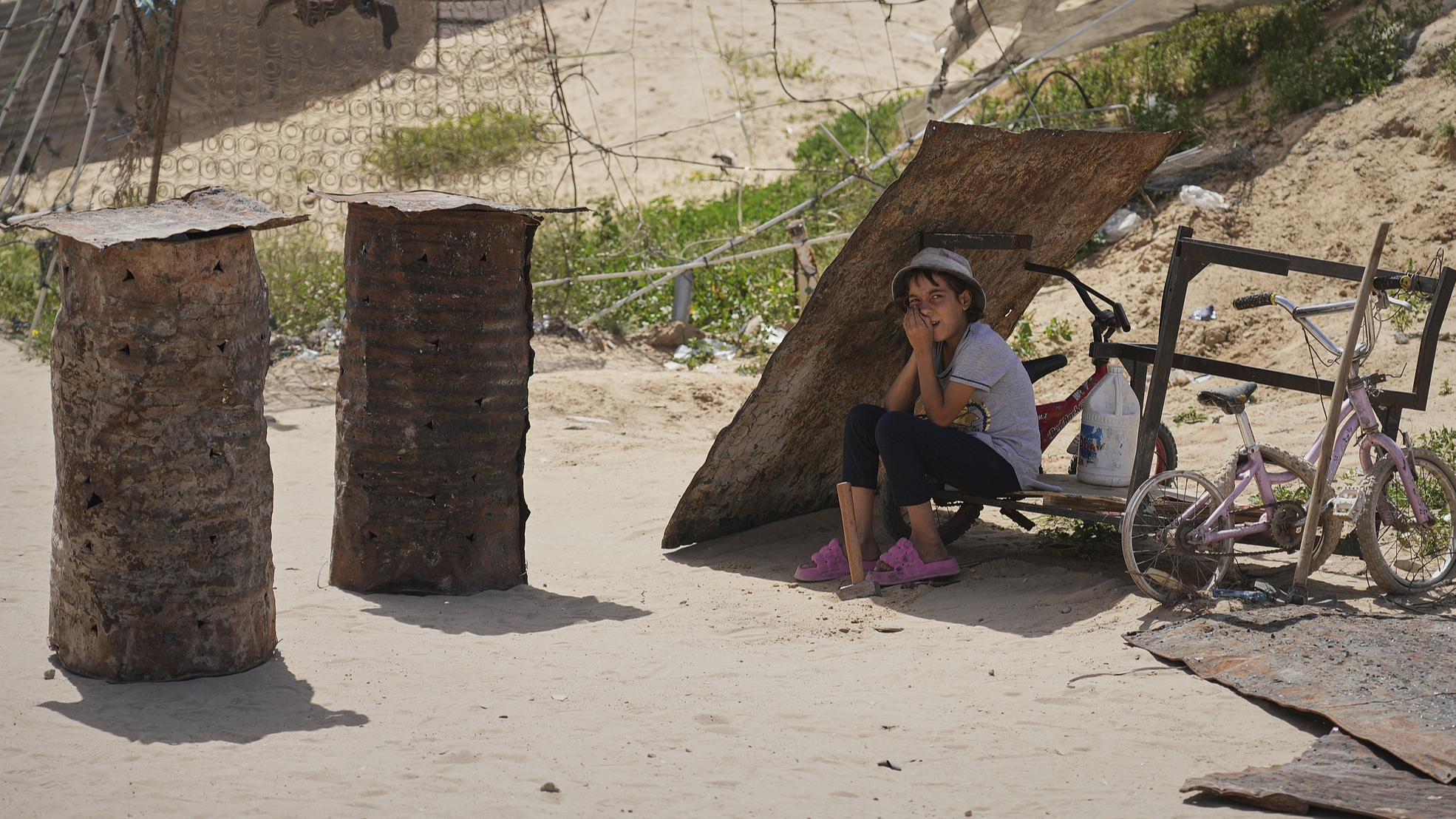By continuing to browse our site you agree to our use of cookies, revised Privacy Policy and Terms of Use. You can change your cookie settings through your browser.
I agree
Search Trends
CHOOSE YOUR LANGUAGE
- Albanian Shqip
- Arabic العربية
- Belarusian Беларуская
- Bengali বাংলা
- Bulgarian Български
- Cambodian ខ្មែរ
- Croatian Hrvatski
- Czech Český
- English English
- Esperanto Esperanto
- Filipino Filipino
- French Français
- German Deutsch
- Greek Ελληνικά
- Hausa Hausa
- Hebrew עברית
- Hungarian Magyar
- Hindi हिन्दी
- Indonesian Bahasa Indonesia
- Italian Italiano
- Japanese 日本語
- Korean 한국어
- Lao ລາວ
- Malay Bahasa Melayu
- Mongolian Монгол
- Myanmar မြန်မာဘာသာ
- Nepali नेपाली
- Persian فارسی
- Polish Polski
- Portuguese Português
- Pashto پښتو
- Romanian Română
- Russian Русский
- Serbian Српски
- Sinhalese සිංහල
- Spanish Español
- Swahili Kiswahili
- Tamil தமிழ்
- Thai ไทย
- Turkish Türkçe
- Ukrainian Українська
- Urdu اردو
- Vietnamese Tiếng Việt
Copyright © 2024 CGTN.
京ICP备20000184号
CHOOSE YOUR LANGUAGE
- Albanian Shqip
- Arabic العربية
- Belarusian Беларуская
- Bengali বাংলা
- Bulgarian Български
- Cambodian ខ្មែរ
- Croatian Hrvatski
- Czech Český
- English English
- Esperanto Esperanto
- Filipino Filipino
- French Français
- German Deutsch
- Greek Ελληνικά
- Hausa Hausa
- Hebrew עברית
- Hungarian Magyar
- Hindi हिन्दी
- Indonesian Bahasa Indonesia
- Italian Italiano
- Japanese 日本語
- Korean 한국어
- Lao ລາວ
- Malay Bahasa Melayu
- Mongolian Монгол
- Myanmar မြန်မာဘာသာ
- Nepali नेपाली
- Persian فارسی
- Polish Polski
- Portuguese Português
- Pashto پښتو
- Romanian Română
- Russian Русский
- Serbian Српски
- Sinhalese සිංහල
- Spanish Español
- Swahili Kiswahili
- Tamil தமிழ்
- Thai ไทย
- Turkish Türkçe
- Ukrainian Українська
- Urdu اردو
- Vietnamese Tiếng Việt
Copyright © 2024 CGTN.
京ICP备20000184号
互联网新闻信息许可证10120180008
Disinformation report hotline: 010-85061466





















Serbia marked a major milestone in its transportation infrastructure with the official opening of another section of the E-763 highway.
Stretching through western Serbia, this 19.5-kilometer segment will reduce the time it takes to travel from Belgrade to Montenegro's Adriatic coast.
Built by Chinese contractors and largely funded through bilateral agreements, the project highlights deepening China-Serbia cooperation, in spite of ever complex geo-political challenges.
A new road now weaves through the hills and tunnels of western Serbia – linking towns, trade and tourism across the region.
Traveling to Montenegro's jagged Adriatic coast from Belgrade will now be quicker. /CFP
The Pakovraće to Požega stretch of the E-763 highway has been years in the making – delayed by demanding terrain and unstable rock formations.
Five bridges and two major tunnels – Munjino Brdo and Laz – help the highway navigate rugged topography, adding to its reputation as one of the most technically demanding highway segments in Serbia.
That was acknowledged by the Serbian President Aleksandar Vučić at the opening ceremony this month.
"I saw that all our Chinese friends understood how many problems they have and how many hardships they face." Vučić said. "However, we are united by their technology, their knowledge, and our persistence and hard work. We managed to solve the problems."
The highway's smart control center now operates out of the Munjino Brdo tunnel, where real-time monitoring ensures both safety and traffic flow.
Final touches are still underway, but the highway is already operational – a symbol of Serbia's push to become a Balkan transit hub.
"This project lasted for several years, from the start to the end." Shou Jicheng, Project Manager, of China Communications Construction Company told CGTN.
"There were certain technical difficulties, and there were also considerable adverse geological factors. We are very grateful to the local governments and residents along the route of the Serbian government, including our financing and investment parties, for their strong support for our project."
The Pan-European corridor XI project reflects the deep ties between Serbia and China. /CFP
The new link now reaches the town of Požega, setting the stage for expanded connectivity to Montenegro's Adriatic coast, as well as Bosnia and Herzegovina's capital Sarajevo.
It also marks a broader strategic goal: to complete Pan-European Corridor XI – a key transport artery that should connect Romanian capital Bucharest with the Italian port of Bari via Serbia and Montenegro.